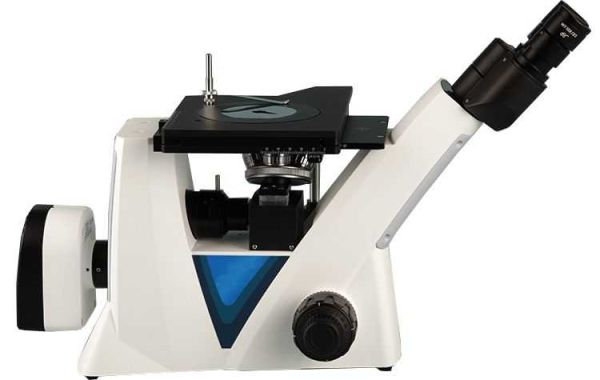There are three main types of metallurgical microscopes available, based on the orientation of the microscope:
Boom metallurgical microscope: Similar to upright metallurgical microscopes, boom microscopes contain a moveable arm that enables them to be placed over large or heavy objects. When huge specimens need to be studied in industrial settings, boom metallurgical microscopes are frequently employed.
Inverted metallurgical microscope: The objectives of inverted metallurgical microscopes are placed below the specimen, and light enters the specimen from the top down. This makes it simpler to prepare specimens for inspection and enables the examination of heavier and larger specimens. In both academic and professional contexts, inverted metallurgical microscopes are frequently employed.
Upright metallurgical microscope: This variety of metallurgical microscope is the most prevalent. The specimen is above the objectives, and light enters the specimen from the bottom up. In general, upright metallurgical microscopes are less expensive and simpler to use than other metallurgical microscopes.
There are other specialized metallurgical microscopes in addition to the three primary types, including the following:
Stereo metallurgical microscope: Examining surface characteristics and flaws can be done with the help of stereo metallurgical microscopes, which give users a three-dimensional picture of the specimens.
SEM: A scanning electron microscope (SEM) creates high-resolution pictures of specimens using an electron beam. SEMs are frequently used to examine the microscopic microstructure of materials.
Confocal metallurgical microscope: Lasers are used by confocal metallurgical microscopes to create very detailed images of specimens. In both academic and professional settings, confocal metallurgical microscopes are frequently used to examine the microstructure of materials.
A metallurgical microscope's suitability for a given application will rely on the user's particular requirements. The size and kind of the specimens that need to be examined, the preferred resolution and magnification, and the budget are all things to take into account.








